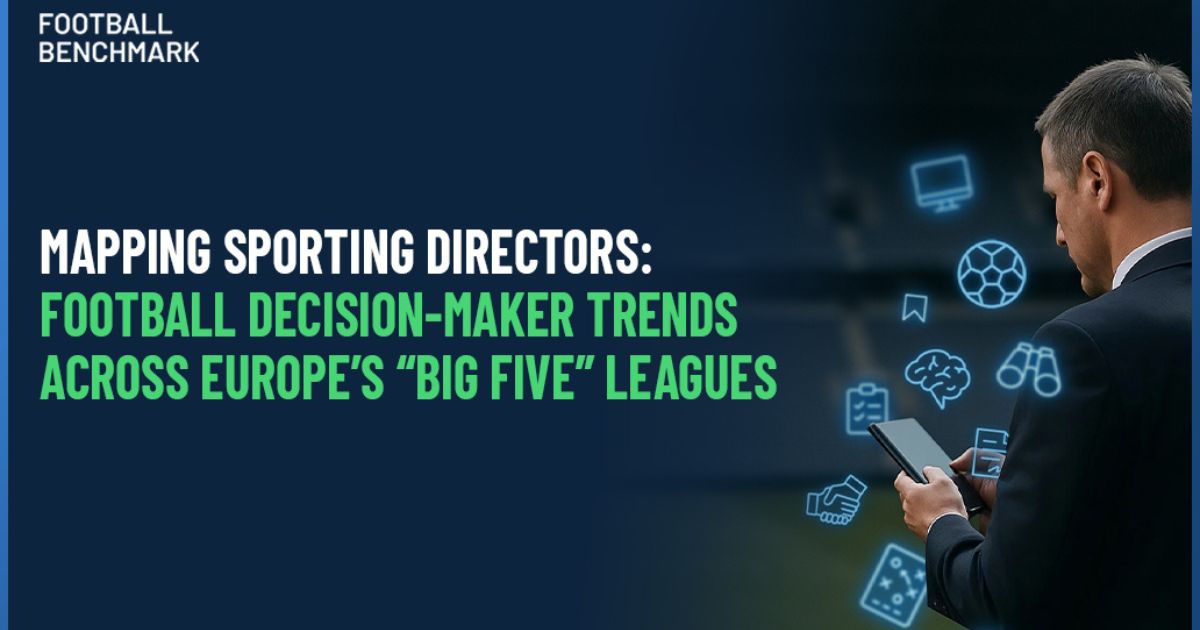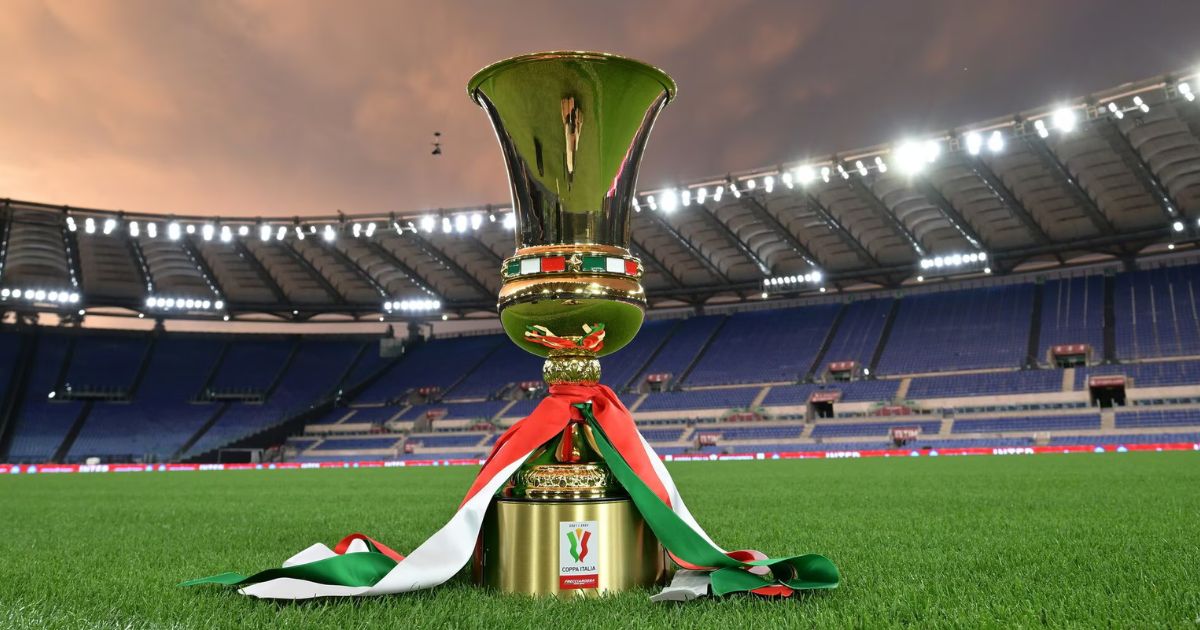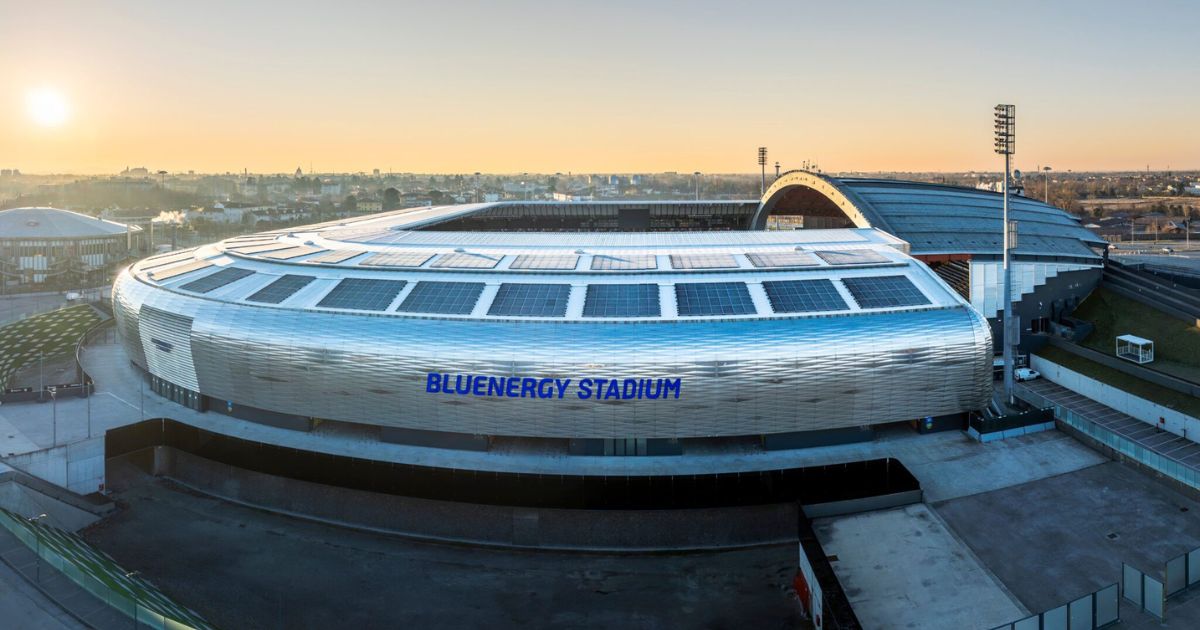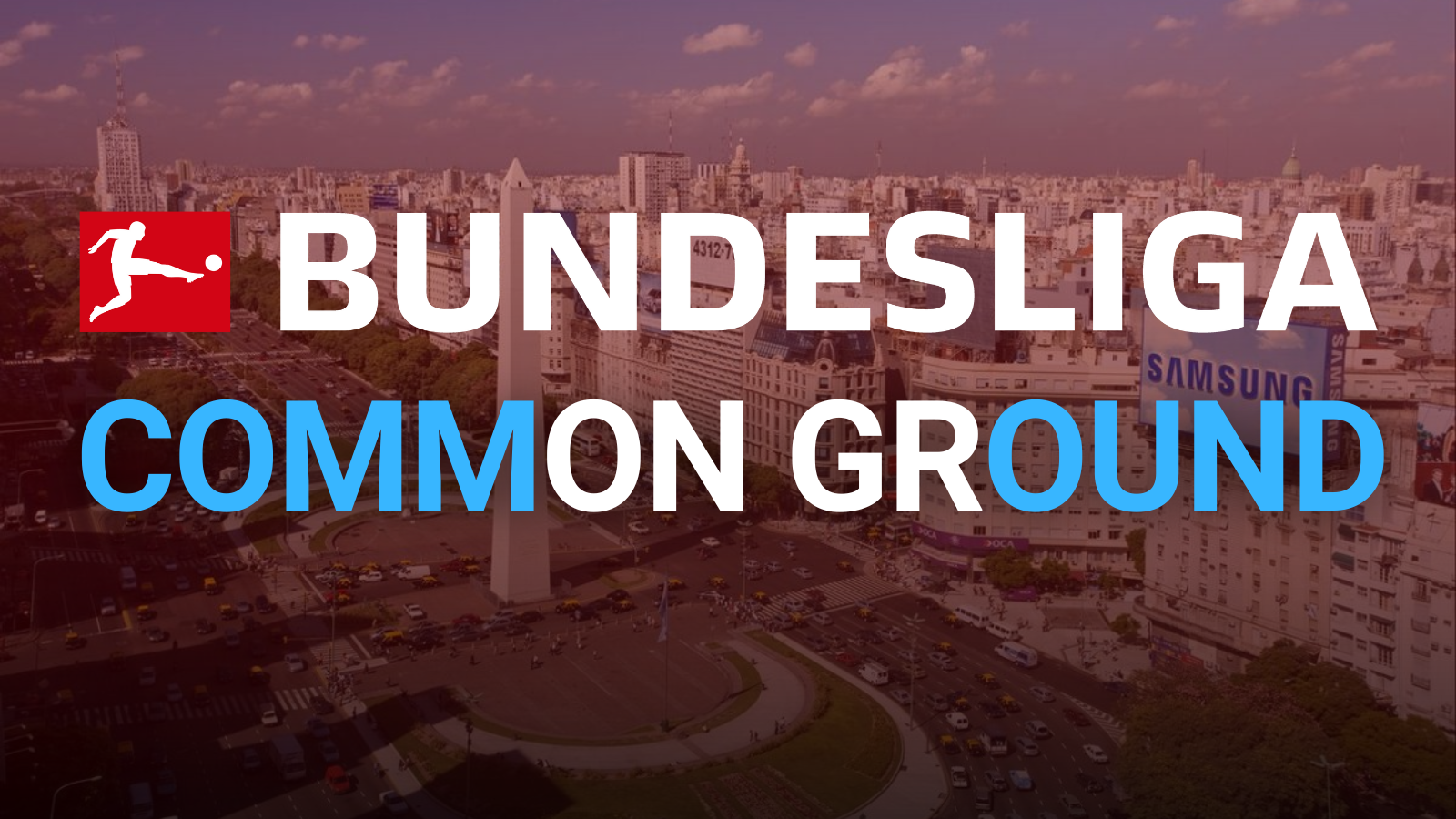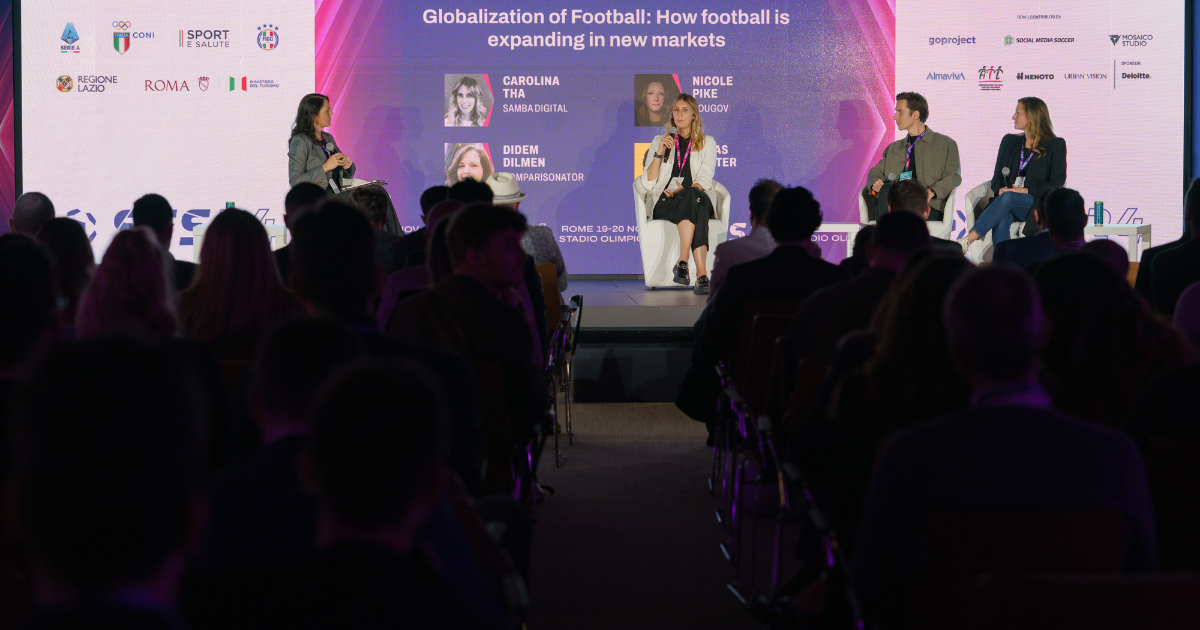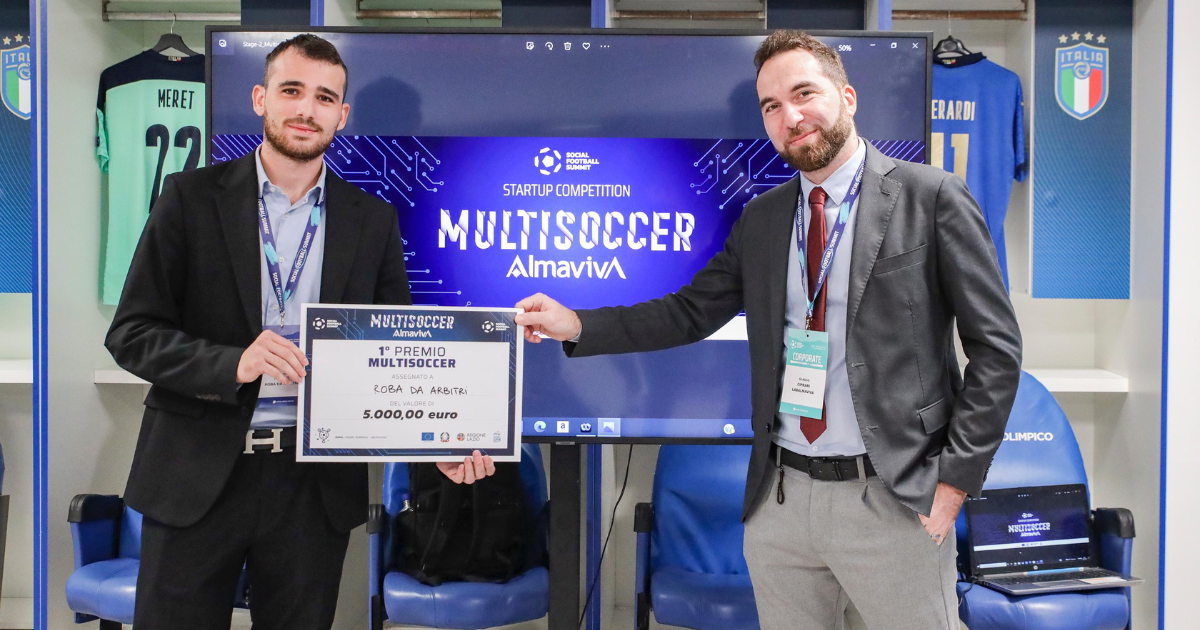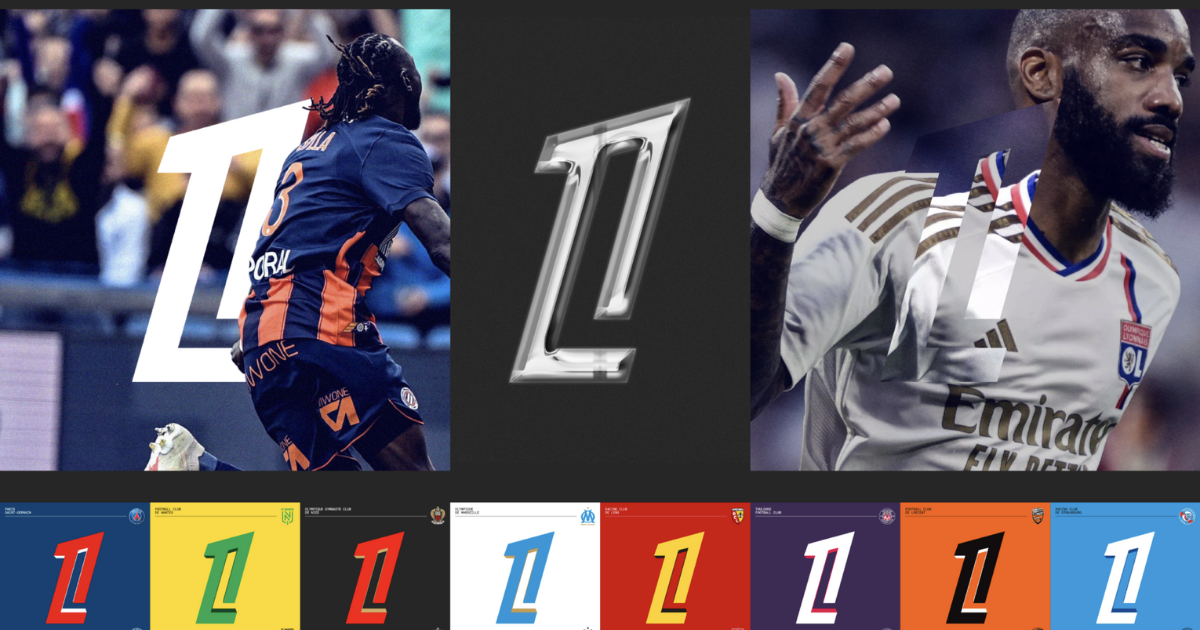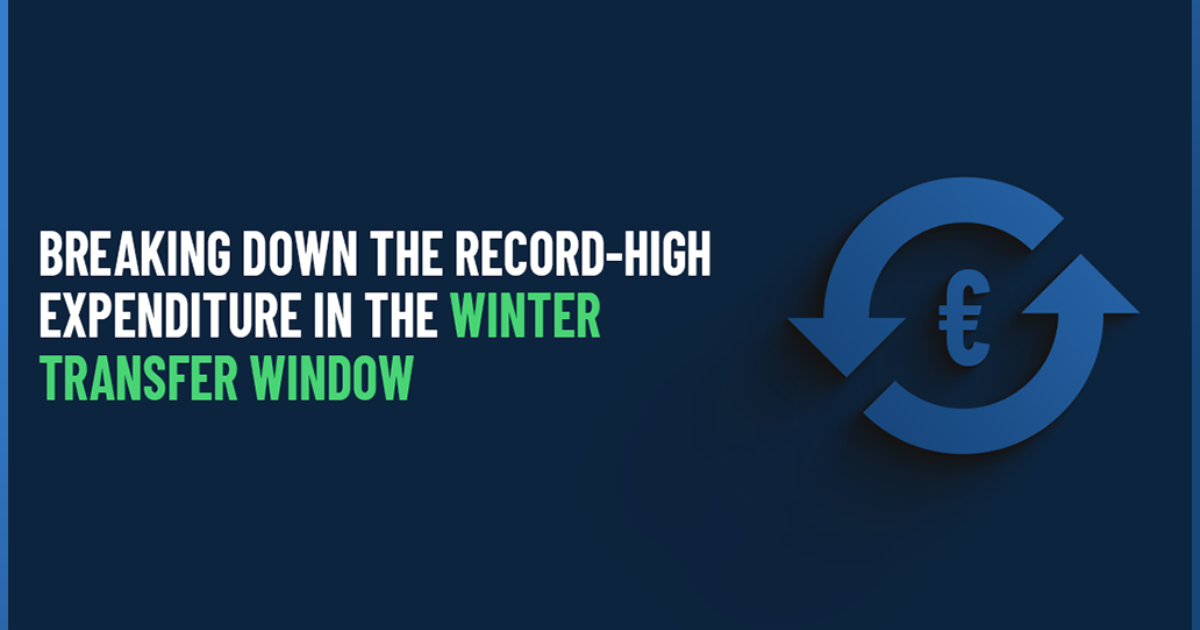Article written by Football Benchmark
Sporting Directors have become increasingly visible in the discourse surrounding the summer transfer window, a period when their work moves into the spotlight. But their role extends far beyond player transfers. From squad building and recruitment to managing the academy pipeline and setting long-term sporting direction, Sporting Directors are now central to how clubs operate year-round.
Seen as the strategic anchor of a club’s football department, they are expected to focus on long-term planning and sporting coherence. Yet despite their growing prominence, Sporting Directors’ performance remains difficult to benchmark. Job titles vary, responsibilities differ from club to club, and the location of decision-making authority is not always consistent.
This research analyses the current landscape across the “Big Five” European leagues (the Premier League, La Liga, Bundesliga, Serie A, and Ligue 1) as of July 2025. Among the 88 Sporting Directors currently in post, it highlights who holds these roles and explores key traits such as whether they played professionally, were promoted internally, or work in their home country, offering insight into those shaping the modern game.
Reflecting the varied governance models across clubs, for the purposes of this analysis, a “Sporting Director” is defined as the senior-most figure fully dedicated to football matters.
Who are the football decision-makers?

A clear trend across the “Big Five” leagues is the prevalence of former players in the role. Two-thirds of individuals currently responsible for football decisions have a professional playing background. This profile is particularly dominant in Ligue 1, where 14 out of 18 football decision-makers are former players. The rationale is straightforward: former professionals often bring credibility, respect with stakeholders, an understanding of the player environment, and networks across the game.
Club-specific ties also influence appointments. In both the Bundesliga and Ligue 1, 6 Sporting Directors previously played for the club they now work for. These profiles can reinforce club identity and encourage supporter buy-in. However, the former player route is not without risk. Sentimental appointments often bring strong cultural alignment or club identity but may not always meet the increasing management demands of the modern role.
The Premier League stands out for its more diverse approach. Fewer than half of its Sporting Directors have a professional playing background. This may relate in part to the relatively late adoption of the role in England, where the Head Coach traditionally held primary responsibility for football matters. While club structures have since evolved, some models still see the Head Coach retain a degree of influence, with Sporting Directors often selected for their operational or strategic expertise rather than purely sporting credentials.
How are they appointed and how long do they last?

Across the “Big Five” leagues overall, around 30% of Sporting Directors were promoted internally, signalling that while internal recruitment is relatively common, the prevailing model still favours external experience. Career pathways into the role, however, vary significantly across leagues. Those promoted internally often rise through a variety of roles, such as Chief Scout or Academy Manager.
In La Liga, internal promotions account for a significant share of appointments, highlighting a league-wide emphasis on continuity and in-house development. This trend is particularly pronounced among clubs with a strong commitment to youth talent development, such as Valencia CF, Athletic Club, Real Sociedad, and Villarreal CF.
By contrast, the Premier League shows a clear preference for external hires, with recent examples such as Hugo Viana (Sporting CP to Manchester City) and Andrea Berta (Atlético de Madrid to Arsenal FC). Monchi, though appointed a couple of years earlier, similarly reflects this approach, having joined Aston Villa after highly successful tenures at Sevilla FC.
A similar trend is observed in Ligue 1, though perhaps for different structural reasons. Many French clubs operate with leaner front-office teams and a high concentration of decision-making at ownership level. As a result, internal candidates may have fewer opportunities to develop into senior football roles, making external appointments more likely when a vacancy arises.

Despite the strategic importance of the role, tenure remains remarkably short. The average Sporting Director lasts just 2.6 years. La Liga leads in stability, with an average of 3.7 years, while the Premier League sits at the lowest, with an average of 1.8 years. These timeframes raise questions about expectations and how success is measured.
Sporting Directors are responsible for building sustainable frameworks across both first teams and academies, while also protecting the club’s overall sporting vision from the volatility of short-term results. Yet with limited time in the role, many find themselves having to prioritise immediate impact over longer-term planning. The real challenge lies not just in defining a clear strategy, but in securing lasting support for it, both internally and externally.
This also raises concerns about the challenge of achieving long-term strategic alignment between ownership and Sporting Directors. Given the role’s influence over some of the club’s most impactful and costly decisions, from recruitment to overall football direction, short tenures can create structural misalignment. One area particularly affected is youth development, which depends on long-term vision and sustained commitment to build a strong pipeline of academy talent.
How much do nationality and experience shape appointments?

Serie A is the most domestically focused, with 18 Sporting Directors being Italian. This reflects a strong tradition of valuing local knowledge and cultural alignment. At the other end of the spectrum, the Premier League shows the most international outlook. Only 7 English Sporting Directors are in place across six Premier League clubs, with Chelsea FC employing Co-Sporting Directors, mirroring a broader trend where domestic coaches are also less frequently appointed.
Overall, Italian nationals are the most represented, accounting for 23% of all Sporting Directors across the “Big Five” leagues. Spain (19%), Germany (17%), France (15%), and England (8%) round out the top five. Portugal leads the way among foreign nationalities, with four Portuguese Sporting Directors currently working across the “Big Five”.
The average age of Sporting Directors across the “Big Five” leagues is 48.6, ranging from 45.4 in La Liga to 51.8 in Serie A. This suggests differing views on the level of experience and seniority required for the role. It also reflects the complexity of the position, which demands a blend of technical knowledge, leadership ability, industry networks, and stakeholder management — capabilities rarely developed through a single, linear career path.
Sporting Director: A role in flux and in focus
Once primarily focused on recruitment and squad management, the Sporting Director role now spans a wide range of responsibilities, from shaping a club’s football identity and contract strategy to aligning men’s and women’s programmes, integrating academy development, managing external stakeholders, and serving as a public-facing voice alongside the executive team. Their influence stretches from the volatility of the transfer market to the long-term architecture of a club’s sporting model. But as the scope expands, so too does the need for a clear mandate and strong alignment with ownership vision.
This raises a critical question: is it realistic to expect a single individual to meet all these demands?
Some clubs are beginning to rethink whether the traditional model (one Sporting Director with full oversight) is still fit for purpose. For example, Real Madrid has long operated without a clearly defined Sporting Director role, relying on strong alignment between top management and the club’s Chief Scout, Juni Calafat. Most recently, Everton FC moved away from the single-figure approach toward a broader “Football Leadership Team” comprising specialists in technical development, talent ID, analytics, and player trading. In other cases, decision-making is distributed through transfer committees involving board members, coaches, and sporting staff — a model that has long existed in various forms. While these structures foster collaboration and risk-sharing, they can also dilute accountability and complicate execution.
Meanwhile, the rise of multi-club ownership (MCO) is transforming the role from above. In these ecosystems, Sporting Directors are increasingly expected to operate at group level, providing strategic leadership across multiple clubs. This structure can strengthen alignment with ownership but also adds governance complexity. Gianluca Nani, who oversees football strategy across both Udinese and Watford, exemplifies this evolution, with a more corporate, cross-club remit at the top and more delivery-focused Sporting Directors at individual clubs.
This shift is also reshaping the leadership pathway. As football (i.e., results, player trading, talent development) becomes increasingly central to club value creation, some ownership groups are appointing CEOs with sporting backgrounds, blurring the traditional line between business and football operations. Clubs like Internazionale, Parma Calcio, US Lecce, LOSC Lille, Olympique de Marseille, and AS Monaco reflect this approach. In such structures, Sporting Directors may adopt a more operational or advisory role, while the CEO steers the broader football strategy in closer alignment with ownership.
While clear trends are emerging — toward strategic alignment, governance innovation, and expanded expectations — there is no universal model. The most effective Sporting Director structure ultimately depends on the club’s ownership profile, governance model, strategic ambition, and operating context. A club with a hands-on owner, a multi-club network, or deep community roots may require a different leadership setup than one focused purely on performance and trading.
Understanding these dynamics is critical to designing football operations that are both resilient and aligned. The real question isn’t what a Sporting Director should look like in theory, but rather, what structure best fits each club’s unique context, goals, and evolution.
Football Benchmark can support clubs in assessing and benchmarking their organisational structures and governance models to ensure strategic alignment, helping tailor leadership frameworks to each club’s unique context and long-term ambitions.
MAPPING SPORTING DIRECTORS: FOOTBALL DECISION-MAKER TRENDS ACROSS EUROPE’S “BIG FIVE” LEAGUES
Article written by Football Benchmark Sporting Directors have become increasingly visible in the discourse surrounding the summer transfer window, a period when their work moves into the spotlight. But their role extends far beyond player transfers. From squad building and recruitment to managing the academy pipeline and setting long-term sporting direction, Sporting Directors are now central to how clubs operate year-round. Seen as the strategic anchor of a club’s football department, they are expected to focus on long-term planning and sporting coherence. Yet
Player valuation update: The most valuable players in world football today
Analysis by Football Benchmark According to the latest update from Football Benchmark’s Player Valuation Platform, a record 21 players are now valued at over €100 million. Alongside this, the average value of the top 100 players has climbed since the Platform was launched (€77.6 million in 2019), hitting €87.2 million in June 2025. From Lamine Yamal’s remarkable rise to the top of the overall rankings to Hugo Ekitike’s valuation leap since February, the data reflects not just who’s most valuable, but how
THE 2025 COPPA ITALIA FINAL HIGHLIGHTS SUSTAINABILITY BEST PRACTICE
After the inaugural edition of the “Road to Zero” project in 2024, Lega Serie A, Sport e Salute, Roma Capitale and Roma Servizi per la Mobilità, with the support of UEFA, continued their commitment to sustainability during the 2024/2025 Frecciarossa Coppa Italia Final. The final hosted AC Milan and Bologna FC at the Stadio Olimpico in Rome on the 14th May 2025 and saw the implementation of several initiatives in alignment with last years’ “Road to Zero” ESG (Environmental, Social and Governance) framework. The “Road to Zero” ESG framework was
International Sports Justice Under Attack: Opinions from the EU Court of Justice
Article written by Carlo Rombolà As we enter 2025, if anyone still believes that sport — in the broadest possible sense — is limited to athletic performance or match results, it is time for a wake-up call. Such a mindset risks overlooking key elements, foremost among them: sports justice. From the Sinner case in tennis to the Brescia case in Italy’s Serie B football league — to mention only the most recent examples — sports enthusiasts can no longer rest easy until the results achieved
Bluenergy Stadium solar farm at the center of soccer’s first energy community
Press release published on the official website of theUdinese Calcio. An unprecedented sustainability and solidarity initiative comes to life around the 1.1 MWh/year photovoltaic park at Udine Stadium Udinese Calcio and Bluenergy Group's joint commitment to environmental and social sustainability takes an extraordinary new step today. As the two clubs announce the completion of work on the photovoltaic system housed on the roof of Bluenergy Stadium, a new project involving the Friuli Venezia Giulia region and society comes to life. THE ENERGY COMMUNITY "Energy
EA FC FUTURES joins Bundesliga Common Ground in creating more opportunities to play around the world
This article is available in its original and unabridged version on the official Bundesliga website. The Bundesliga and EA SPORTS have joined forces as part of EA SPORTS FC FUTURES initiative, making the most of the established Bundesliga Common Ground pitches to provide further benefit to local communities around the world. This partnership project aims to promote the revamp and continued utilisation of 4 community pitches located around the world. Starting with the sites in Brazil, Nigeria, Indonesia and Germany, each pitch
Football from a global perspective: strategies, challenges and opportunities of the new digital era
Football is undergoing an unprecedented transformation, extending into new markets and reaching fans around the world. In the SFS panel'Globalization of football: how football is expanding into new markets,' industry experts discussed the strategies, challenges and opportunities that are driving the globalization of the game. Speaking on stage, moderated by Didem Dilmen , Director Of Communications Comparisonator, were Carolina Tha, Country Manager ITA, ES, PT and CH SambaDigital, Lucas Bugter, Director of Business Development 433 and Nicole Pike,
Ref House, Refereeing 4.0: From SFS22 to the New Rules of the Game
Giuseppe Totaro and Rasoul Abdulzahra are two referees ready to revolutionize one of the most controversial categories, often at the center of debates and headlines in major media. We at SFS know them well: they were awarded during the 2022 startup competition when their creativity and innovative vision already stood out. Today, the spotlight is on them again, thanks to Ref House, an ambitious project now close to its big launch. We reached out to Giuseppe, who gave us an
“Football. But French”: The Ligue 1 Rebranding and the Challenge of Sporting Identity
French football has decided to change its look. With the launch of the "Football. But French." campaign, Ligue 1 has embarked on an ambitious rebranding operation aimed at redefining its positioning in the international football landscape. This is not just a new visual identity—it is a cultural statement. French football seeks to be distinctive, elegant, and authentic, without following the narratives set by other top European leagues. The New Visual Language of Ligue 1 One of the most striking changes is the
Breaking down the record-high expenditure in the winter transfer window
After a summer window that saw a 10% drop in spending, the winter window increased by 8% compared to last season, reaching EUR 1.46 billion. As a result, the total transfer expenditure (summer + winter windows) across top-division UEFA leagues and the English Championship shows a 4% overall drop compared to last season reaching EUR 7.87 bn in 2024/25. This represents a slight decline in expenditure for the first time since the pandemic. With the transfer window now closed for



